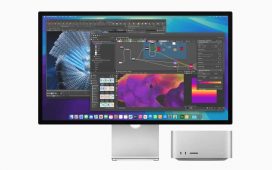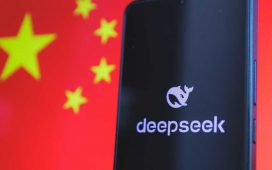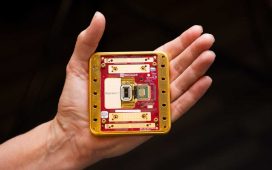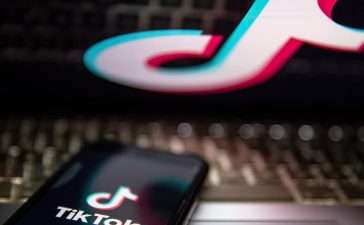The “Augmented Connected Workforce” is one of Gartner’s Top 10 Strategic Technology Trends for 2024.
Which raises the question: “Wait, what?”
The Augmented Connected Workforce (ACWF) is a concept or a paradigm where advanced technologies are used to give employees what essentially amount to super powers. Specifically, the idea envisions integrating workers with Augmented Reality (AR) glasses, AI tools of every description, wearable sensors, wearable communication tools, IoT, robots, exoskeletons, machine vision and cloud computing.
In short, the Augmented Connected Workforce concept builds a better worker by outfitting them with connected tools that deliver instant access to information and communication.
That sounds a lot like science fiction. Specifically, it sounds like cyborgs assimilated into the corporate hive-mind. But in fact, all trends in workforce technology point in the direction of the Augmented Connected Workforce concept.
Here are a couple of clarifying scenarios.
- A complex manufacturing environment is run by assembly line workers outfitted with augmented safety glasses and exoskeletons, enabling each to lift 5 times more weight than an un-augmented human. New procedures are announced and demonstrated in augmented reality, with instructional overlays on actual equipment. Workers on opposite ends of the factory collaborate in real time as if they were side-by-side. Wearable sensors inform all robotic equipment of the presence of a human, causing them to stop moving when a person is near or work around people.
- A CEO working from home meets with the board, each member of which is represented by a life-size, life-like hologram sitting around a table. She’s able to conjure up real-time dashboard like business process data, which is represented in 3D hovering over the table. A question comes up about compliance, so the compliance officer is brought into the meeting, also as a hologram. AI takes notes and communicates details with the 3D data to all board members.
The benefits are clear: namely, the removal of friction for instant actionable information and communication (and with it, the breaking down of departmental silos), the enhancement of the human brain with AI, the enhancement of the human body with exoskeleton technology and the general integration of human and machine. This is all designed to result in improved problem-solving and decision-making, better automation, streamlined communication and collaboration, reduced errors and improved safety, better individual productivity and operational efficiency, better asset management and other benefits.
One central concept to the Augmented Connected Workforce is the importance of seamless, instant communication and collaboration regardless of location. In other words, the “workplace” is a global, non-geographic virtual space. This supports collaboration between people globally, and remote work. Meetings are virtual, and individual workers connect to troubleshoot issues and brainstorm, no matter where they are.
In fact, the “workplace” is a shared set of resources mainly accessed through augmented reality. The idea is to use these digital technologies and new user interfaces to foster a sense of collaboration and community. Onboarding, training and team-building all happen in shared virtual spaces.
We can also expect a blurring of the line between work and training for that work. Here’s what I mean. Training will take place increasingly through VR and AR, giving the employee a visceral sense of actually doing the work before actually doing it. Then, while on the job, new processes and methods and reinforced learning can also happen through AR on an ongoing basis, with competence and performance measured by AR devices, wearable and IoT sensors and AI.
The Augmented Connected Workforce will both require, and facilitate, constant training.
Sounds great — but why now?
While analysts have been talking about the Augmented Connected Workforce for a few years, three trends are moving this to the forefront (and convincing organizations such as Gartner to say it’s one of the top tech trends this year).
The first, of course, is the generative AI (genAI) revolution kickstarted a year and a half ago by OpenAI’s public release of the ChatGPT chatbot. Since then, the sector has exploded, with hundreds of new business and productivity tools emerging that leverage genAI.
Second, a surge in spatial computing platforms such as the Apple Vision Pro and a new compelling category of heads-up display AR devices and platforms has made AR ripe for widespread, across-the-organization enterprise use. The mainstreaming of AR glasses will fuel massive development of enterprise tools that give users real-time visual data hovering in physical space.
And third, the AI glasses revolution means that white collar employees and others will be able to wear devices that look like ordinary glasses (and may in fact have prescription lens) that deliver real-time access to AI all day, every day.
Now, we can expect a new generation of solutions that combine AI and AR with sensor-based devices, robotics and cloud computing. In fact, companies like Glartek and LightGuide are already delivering solutions that explicitly support the Augmented Connected Workforce concept.
The challenges ahead
The coming transformation represents a radical leap forward in how businesses operate. Gartner predicts that by 2027, one-quarter of CIOs will use augmented connected workforce initiatives.
But challenges abound. The top issue yet to be tackled in any meaningful and systematic way involves cybersecurity. The degree of connectivity between systems and friction-free access to data offers an unprecedented attack surface that will have to be mitigated by new security technologies and methods.
Another is cost. Beyond the hardware, software, cloud, and service solutions, Augmented Connected Workforce transformation will require constant training and upskilling and more sophisticated change management.
And yet another challenge will be the integration of various next-generation technology systems with each other.
It’s early days for the Augmented Connected Workforce. But even now, it’s time to revisit the IT roadmap and start paying attention to the component parts of this trend, starting with AI, AI automation, AR in all its variations and the emerging world of genAI-enabled tools.
The fears around AI and other technologies replacing workers is overblown. What’s far more likely is that workers will be enhanced by AI and other technologies and transformed into super workers.
Copyright © 2024 IDG Communications, Inc.











